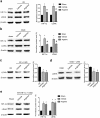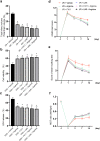Arginine is neuroprotective through suppressing HIF-1α/LDHA-mediated inflammatory response after cerebral ischemia/reperfusion injury
- PMID: 32321555
- PMCID: PMC7175589
- DOI: 10.1186/s13041-020-00601-9
Arginine is neuroprotective through suppressing HIF-1α/LDHA-mediated inflammatory response after cerebral ischemia/reperfusion injury
Abstract
Neuroinflammation is a secondary response following ischemia stroke. Arginine is a non-essential amino acid that has been shown to inhibit acute inflammatory reaction. In this study we show that arginine treatment decreases neuronal death after rat cerebral ischemia/reperfusion (I/R) injury and improves functional recovery of stroke animals. We also show that arginine suppresses inflammatory response in the ischemic brain tissue and in the cultured microglia after OGD insult. We further provide evidence that the levels of HIF-1α and LDHA are increased after rat I/R injury and that arginine treatment prevents the elevation of HIF-1α and LDHA after I/R injury. Arginine inhibits inflammatory response through suppression of HIF-1α and LDHA in the rat ischemic brain tissue and in the cultured microglia following OGD insult, and protects against ischemic neuron death after rat I/R injury by attenuating HIF-1α/LDHA-mediated inflammatory response. Together, these results indicate a possibility that arginine-induced neuroprotective effect may be through the suppression of HIF-1α/LDHA-mediated inflammatory response in microglia after cerebral ischemia injury.
Keywords: Arginine; HIF-1α; Ischemia stroke; LDHA; Neuroinflammation; Neuroprotection.
Conflict of interest statement
The authors declare no competing interests.
Figures






References
Publication types
MeSH terms
Substances
LinkOut - more resources
Full Text Sources
Other Literature Sources
Molecular Biology Databases
Miscellaneous

